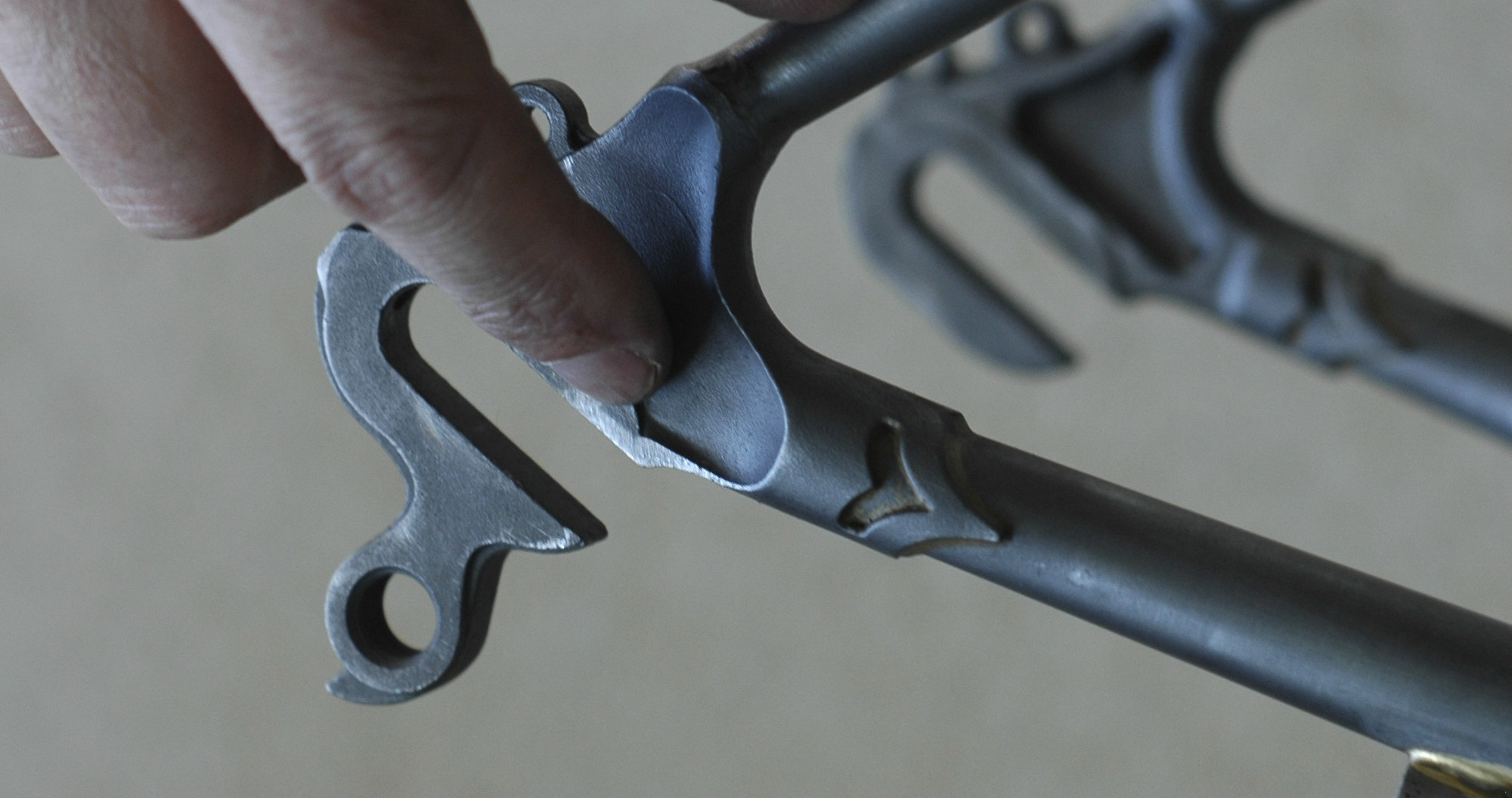This is #3 in an ever-growing series of answers to frequently-asked questions about touring bikes. If you’re new here, why not start with #1: What Exactly Defines A Touring Bike?
Discussing the pros and cons of different metallic alloys is probably not something you ever thought you’d find yourself doing until you began researching touring bicycles.
But you will undoubtedly have discovered that there is a never-ending debate over whether steel or aluminium as a frame material is a better choice for touring bike.
Let’s cut to the chase: if you are planning to keep your touring relatively short term and confined for the time being, it categorically does not matter one bit what your bike is made of, any more than it matters what colour they’ve painted it.
That’s my categorical answer. Now for the nuances.
The thing about aluminium

You may have read somewhere on the internet that aluminium is a big no-no for touring. If so, you are probably wondering why.
The way I see it, the “no aluminium” dogma reflects the tendency for long-distance cycle touring nerds on the internet to project everyone else’s definition of a ‘cycle tour’ onto their own real or imagined epic trans-continental bicycle journeys – when in reality there are a lot more people happily pootling about their home countries for a few days or weeks at a time. Not everyone wants to cycle round the world and write a book about it.
If you take a quick look at the touring bikes available today, you’ll notice that touring bikes are available in both steel and aluminium frames.
Of these, the cheapest touring bikes invariably have aluminium frames, simply because it’s less costly to manufacture at scale and thus cheaper for you to buy.
The thing about steel

The more expensive bikes on offer, however, particularly in the tiny niche of world expedition bikes, are almost universally made of steel – to be specific, usually cromoly steel or ‘cro-mo’, a particularly strong type of steel alloy including elements of chrome and molybdenum.
Aluminium was originally introduced as a frame material because it enabled manufacturers to mass-produce frames more cheaply and in more specialised and cooler-looking forms, not because its physical properties were better suited to the construction of a standard diamond-shaped bicycle frame.
Stiff aluminium fatigues more quickly than pliable steel, and this is one of the arguments for steel over aluminium for ultra-long tours: in the really, really, really long term (we’re talking years, if not decades), steel will endure more abuse before structurally failing than aluminium will.
This comes with a caveat: frame material won’t matter a jot if a frame is being subjected to stresses it was never designed to handle in the first place. And I might as well mention that I am yet to hear of a touring cyclist ever ‘wearing out’ an aluminium touring bicycle frame through fatigue (though apparently there’s now one in the comments).
The other main argument for steel as a frame material for long-term touring – which makes a little more sense – is that you’re more likely to find a fabricator or welder who can work with steel in the event of a breakage, whereas if you break an aluminium frame in the middle of nowhere, you may be hitching a ride to the nearest airport to find someone who deals with aluminium.
This again is simplistic and assumptive. A stick-welded repair to your precious handmade fillet-brazed cromoly frame is never going to be as strong as the original build, and a heavy-handed welder is as likely to blow a new hole in your frame as fuse the cracked dropout. In reality, a frame structurally compromised in an accident will either need replacing or attended to by a professional framebuilder, regardless of frame material. A local welder might well fix things up enough to get you to the next city, but they’re unlikely to restore your bike to its former glory.
The bottom line, of course, is that the scenarios in which frame material would have any bearing upon the outcome are also the scenarios in which your own flexibility and resourcefulness will play a far more important role. Breaking any type of frame will involve a major disruption to a long-term tour, whichever way you look at it, and a breakage is more likely to happen because of a crash or in transit than through sheer use – in which case frame material won’t make a difference either way.
So which to choose?
If you want to know my personal take on the steel versus aluminium debate, it’s this: the main reason people buy steel-framed bikes for long-term touring is because most long-term touring bikes are made of steel.
They have traditionally been so, their designs rarely require extravagant tubing assemblies, and the world of touring is too addicted to the tried-and-tested-ness of steel to accept a shift to anything else. And why would it? If it ain’t broke, don’t fix it.
Ostensibly it’s also due to the arguments above, but dig into the world of long-term touring and you’ll hear countless stories of broken frames which are material-agnostic and have been purely due to the inevitable spells of bad luck that characterise all tours when looked at in the long term.
You’ll also hear stories of how these breakages were dealt with and note that the outcomes have far more to do with the attitude of the riders in question than with what goddamn type of metal the bike was made from. Sheesh.
Next in the Touring Bike FAQ series: Disc brakes or rim brakes?


Something to add?